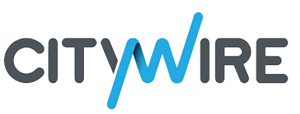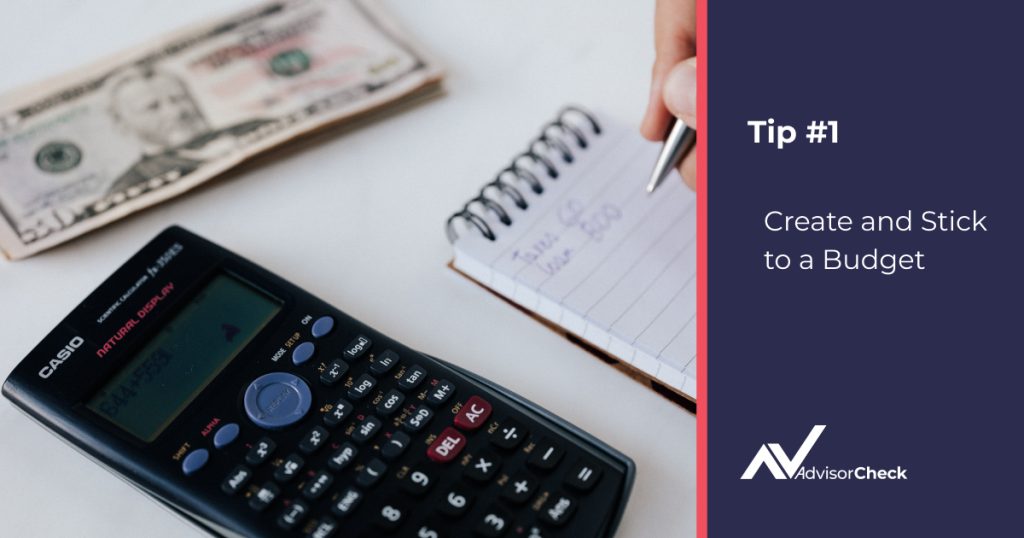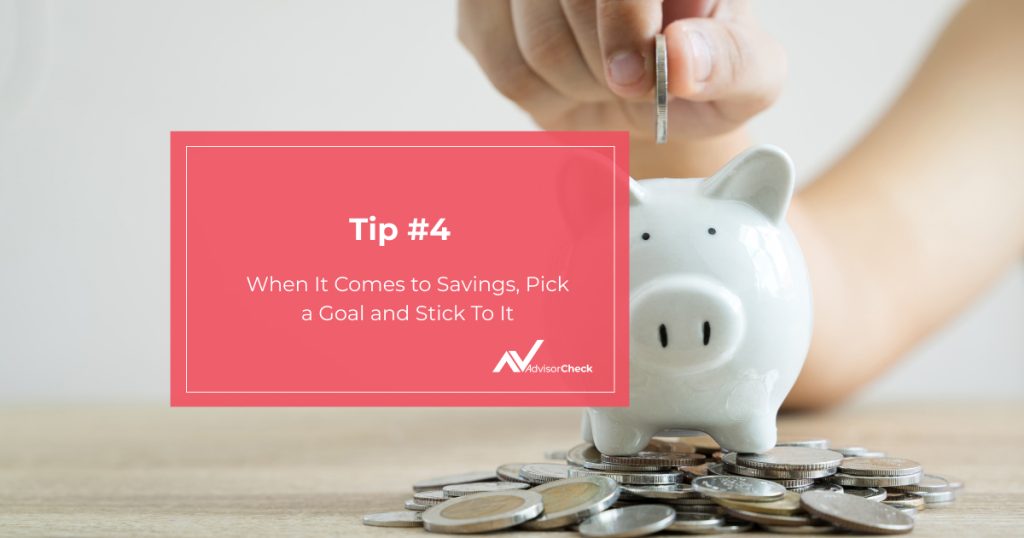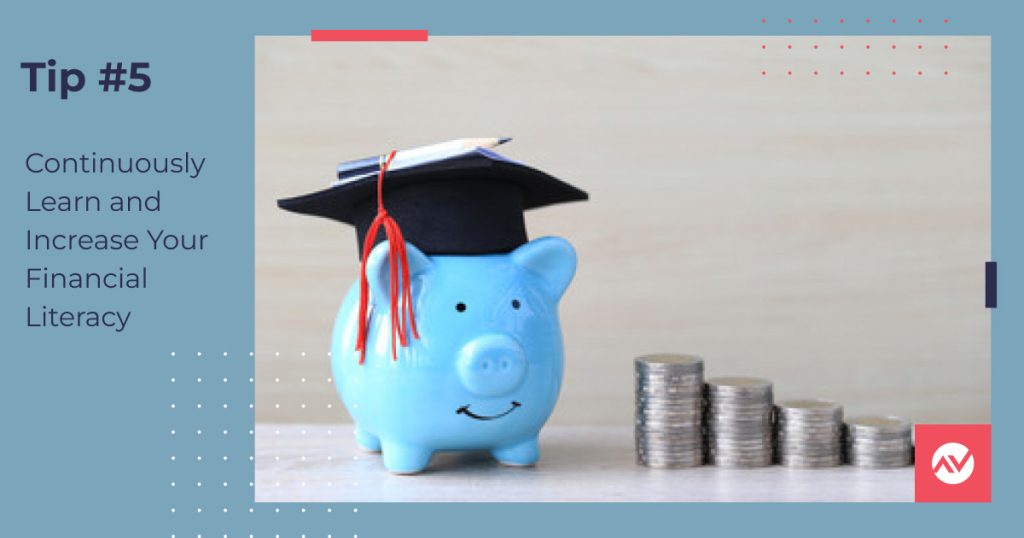
Personal Finance
These Are the 7 Things You Should Be Doing to Start Your Year Right (From a Financial Perspective)
As Featured in












Anyone who set out to change their lives in any significant way in 2020, 2021 or 2022 may have faced quite a troubling outcome. So when it comes to 2023, it might be difficult to take the year on with the same determination that you may have once had, before the global pandemic started. Life has been quite difficult and uncomfortable for a lot of people, but that doesn’t mean that it has to continue down that same path. If you’re an outlier who is doing well in these areas, we applaud you and also want to provide you with some additional tips to get your life in even better shape. If you’re looking ahead toward 2023 and searching for concrete ways to improve your financial situation, keep in mind that there are certain things you can control when it comes to your finances, and certain things you cannot. You can’t control the economy, the behavior of the markets, interest rates, inflation or your investments’ performance. That’s why – as challenging as it may be at times to manage your financial anxiety – you should try not to waste time worrying about these things, because your choices have no bearing on them. You can, however, control your own actions. You have complete autonomy regarding how much you spend, how much you save and whether or not you stick to a budget, for example. So you can expect every item on the list below to relate directly to financial decisions that you and your family can make – it’s just a matter of developing the financial discipline to consistently follow through on your goals. Tara Seegers, CFP, AWM, MMP, senior vice president and financial advisor at Blonkvist Investment Group and RBC Wealth Management. has the following thoughts on the matter: “Understanding your cash flow is the first step to make progress on gaining greater control over your budget, paying off debts and increasing savings. Avoid using credit to make purchases when you are making a concerted effort to stay within budget, because you get the immediate feedback loop of seeing your bank account worth less after the purchase. This is a hack that typically leads to quick behavior change. When paying off debt, the application of the debt snowball is a good one. Tackle your highest-interest debt first, put all of your debt payment dollars toward that debt, and once paid off, go to the next highest-interest debt outstanding until all debts are paid off through this behavior. For your cash on hand, make sure you are looking for the highest interest paid on cash deposits — this is not really “growing” your capital, but is helping your cash to keep up with purchasing power, which is impacted significantly during periods of rising interest rates. There are a lot of competitive options for yield on cash in this higher interest rate environment. The landscape has changed compared to what was available before rate hikes occurred, so don’t assume that the savings account rate at your bank is the best option available." Establishing a budget is not difficult, but there are so many people who don’t do this. And if you do make budgets for yourself, you have to remember to update your budget each and every single year. The problem with building a budget is that not only do you need to establish a monthly budget, you also need to stick to said budget. Each person’s specific budget will look a lot different than another person’s, as people have wildly different spending habits. Considering that only 35 percent of Americans practice their financial literacy, your budget in particular may look out of place when reviewed by a professional. Considering that less than half of Americans adhere to a budget that translates to a healthy financial lifestyle, it may behoove you to create one so you can start putting your finances in order. Factors you should consider paying attention to when it comes to your budget are: In a larger sense, creating a budget means deciding what aspects of your life to prioritize, and which to put on the back burner. Former president Barack Obama put it best when he said, “A budget is more than just a series of numbers on a page; it is an embodiment of our values.” Consider your values as you create your budget. More practically, your budget will have to be below your expendable/disposable income level to ensure you don’t get yourself into debt. The tighter your budget, the more you can save (which is great!) – but we’d advise you to make sure your budget is realistic, or the chances you’ll actually end up adhering to it will plummet. You’ll be in good company if you end up creating a budget, as almost a third (31 percent) of Americans reported that they plan to do the same as one of their financial resolutions in 2023, according to a poll by Experian. Here are some of the most common things you should be looking at when you create your budget: After you go through your paycheck, you should itemize out how much you predict you will earn annually for future years, based on your yearly salary adjustment for inflation (what most consider a raise), along with any promotions you may incur in the future. This will help you see a wide view of what your life could be like in the next 10 years. From there, you will want to start looking at the costs of what you are currently spending your hard-earned money on. These are the most common things that people have as recurring expenses: You will want to make sure that you are spending less than what you are taking home. You will also want to make sure you are making investments for the long-term success of your life.How optimistic should we be about 2023? While 2020-2022 was not that great – both from the perspective of finances from living a comfortable life – should we be expecting to see much of a difference in our own lives going forth.
These Are the 7 Things You Should Be Doing to Start Your Year Right (From a Financial Perspective)
1. Create and Stick to a Budget

What Does a Healthy Budget Look Like?
We empower new and seasoned investors to take charge of their finances.
Get the most reliable financial resources delivered straight to your inbox.
As tempting as it may be to scale up in life and increase those bills, we have to consider that the United States as a whole is not in the best financial state right now. That means that cutting back on essentials is going to be quite important, to get more money into the savings and investment accounts you will need down the line. Dunkin Donuts. Starbucks. Panera Bread. They’re incredibly convenient, but those coffee runs and lunch orders really add up. Even eliminating just a few of these trips every week could end up saving you thousands of dollars per year. But as valuable as those extra thousands of dollars could be, that’s just a start – your savings potential is much greater. We’ll explain why. The “Big 3” are the three areas where we spend most of our money: If you can cut any of the Big 3 significantly, it will make a tremendous difference in your ability to save money. Cutting more than one will be an even bigger bonus for your savings account. This is especially important to do right now, in light of all the financial uncertainty and potentially high inflation we’re facing going into 2023. And in the long run, the sooner you start saving for retirement, the more you’ll be able to put towards investment accounts – compound interest can help what may seem like a few dinner dates with a date or a spouse now to snowball, with impressive returns over decades. CNBC articulated that if you invest $250 a month with an 8 percent average yearly return on your investments, you’ll earn significantly more if you begin at an early age: Americans are now under the impression that you need $1.25 million to retire comfortably, according to a Northwestern Mutual survey. That means $250 a month in savings isn’t going to cut it. To hit those retirement numbers, a lot of money is going to be needed to be allocated into both savings and for retirement, not to mention a home if that is something that you are thinking of purchasing in the future. If you plan to live on one of the coasts at retirement, your expected numbers could be twice the $1.25 million one would expect to retire, if not higher. We also have to factor in that inflationary periods, along with recessions, occur in America once every decade or two, and have done so since the inception of America in 1776. That means that there will be additional periods in our life where the costs of goods increase as they have now. If you were comfortable paying $1.50 for a loaf of French bread at the grocery store five years ago and felt the shock of it going up in cost to $2.50, you probably felt the same throughout the rest of your purchases. 2. Find Ways to Cut Costs Across the “Big 3”

It is estimated that about 65% of Americans are financially unhealthy and unable to manage their finances.
Read the full white paper to see how much money Americans are losing each year.
If you plan to retire in this decade, you may have taken a glance at your retirement account and seen that the numbers do not account for our current inflationary period and you may fall short for retirement. If you are in your late 30s or 40s and plan to retire in 20 years, that loaf of French bread may end up costing you $4.00 instead of $2.50. If you are in your early 20s, that French bread may end up being worth $6 or more at the time you retire. When we factor the French bread example in place, costs of living could be exponentially higher than what the average American thinks they actually need to retire. Considering that, here are some things you may need to consider cutting back costs on to accommodate for what the future may hold. 1) Housing/accommodation: As uncomfortable as it sounds to live with another party, this will ultimately help someone save significantly on their mortgage payments, or up to half, if not more, on their rent costs. If you live in a major metropolitan city like Los Angeles or New York, it may even behoove you to consider having multiple roommates to accommodate for the exponential costs in the area. During economic downturns, it is quite essential to start saving money. That money is going to not only build into an emergency fund in case an unfortunate circumstance were to arise, such as a layoff or a costly repair on a vehicle, but it would also help you have a repository of funds that could eventually be used towards home ownership – along with a more comfortable retirement. If you have a mortgage, you can invite your family to move back in with you to curtail the rent. With many professions moving to a work-from-home environment, adult children may be able to make accommodations to live with family during these turbulent times and contribute to the mortgage. If your kids have a mortgage and you don't, they could invite you to live with them and pay the mortgage together, as opposed to paying for rent at a place you don't own. If neither party has a mortgage, then finding an apartment complex that accommodates the entire family could be a great option as well, as the savings could be geared toward the future purchase of a home. The cost savings for living with your family will help propel you above your peers when it comes to having a flexible amount of cash that you can work with. As our families are the most essential component of our lives, it only makes sense to reunite together and work as a unit to cut costs to help you and your family save up enough money to make an impact on your overall financial life. It may feel good to look out your floor-to-ceiling glass windows out at the bustling city life as the rest of the world is at work, but living in a glamorous apartment is just that. Living in an apartment. You aren’t a homeowner. You’re paying rent to stay at a place. The savings utilized towards moving into a more moderate home could then be used towards a down payment on a mortgage in the future. Purchasing a home is what most people would consider to be the ultimate sign of success. It’s their way of going out there and proving to themselves that they made the American dream come true. Yet, so many people end up purchasing a home that barely leaves any wiggle room in their budget, which leaves them completely vulnerable to any negative financial situation that could occur, such as the loss of a job or an emergency that could arise out of nowhere. Stretching a mortgage is common – so many people do it. Jonathan Trutter, an AdvisorCheck board member says, "Most people do not consider the ramifications of stretching a mortgage – as oftentimes stretching a mortgage adds additional unexpected costs, along with taking away from something else. While they may have a higher payment and a heftier down payment to cover if they move from looking to purchase a $900,000 home to a $1 million house, there are also expenses that may not also be considered, such as the additional costs to clean, heat and cool and property tax on the additional 200 extra square feet of the home." Be sure to not stretch yourself when it comes to getting a mortgage for the home you end up purchasing – look at homes that will leave enough wiggle room in your budget for any negative financial situations that could arise. 2) Food and entertainment: Many employees are now working at home as opposed to leaving the office to go out on their lunch break. This provides ample opportunity for many people to cook at home. The cost savings on eating at home are astronomical in comparison to what one would spend going out to eat. Considering that $1.25 million is just the tip of what one would need to have saved up for retirement, cutting costs here isn’t going to cause that much detriment to one’s life. A few meals at home may be a little more inconvenient to make, but the nutritional value – along with the quality of what you are eating, will definitely be higher. Just saving $100 a month by cutting out lunches is going to help you have a much better financial outcome than your peers. If you can limit the time you go out with your friends or order expensive delivery app services as well, that could put your savings in the hundreds each month, and for some outliers, these savings can even be in the thousands. If you are dating and your significant other loves going out to fancy eateries that have a lavish environment, then you can still go out and do these things. Just frequent them less often and on special occasions, as the priority for your future family is going to be depending on your cash flow being positive for the decades to come. Other things that could help contribute to lower food costs are the adoption of digital technologies, through apps on your phone. People who may not be technologically savvy are missing out on deals, both from restaurant chains and the local grocery store. While people may have been accustomed to looking at the weekly paper for deals at the grocery store, a lot of the best deals are found on your grocery store chain's mobile application. Some companies like McDonalds offer deals like buy 1 get 1 free offers and weekly $1 large fries offers strictly on their mobile applications, which limits the ability for the less technologically savvy to take advantage of these deals, when they're probably the ones who need it the most. If you are technologically savvy and you're reading this, help your parents out and get these applications on your parent's phones. A vacation makes sense. Going once a year is great. Going twice a year is even more amazing. After tirelessly working in your career, everyone needs a refresh. However, there are ways to cut down costs on a vacation. For example, instead of going out to all the expensive places, you could opt for an all-inclusive vacation. You can also search local restaurants and stay at an inn over a hotel. There are countless ways to cut down a cost of a vacation. On average, a vacation should cost $1,919 per week. A vacation for two people will typically cost around $3,838 per week. These are good numbers to stay within when you plan your trip. Going out to a concert is amazing. Spending time at an exclusive event feels like an unreal experience. But as we are in the middle of inflation and on the cornerstones of what may end up being considered a recession in 2023, it would be smart to avoid the weekly outings with friends. Try limiting your time out to once every other weekend, or to once a month. Or if you buy video games, purchase a few less in-game purchases and a few less titles to play on your Steam account, Playstation 5, X-Box 360 or Nintendo Switch. While $20 to $100 may not feel like much when you are spending it, we do have to keep in mind that 2023 and onward, our economy might not get in any better shape than it is. If you’re having difficulty with going out less due to the pressure of your peers, try telling your friends that you can only see them biweekly as your budget is tight. It might be a bit uncomfortable at first, but your friends will not stop being your friends because you are going out less. This will also make the time that you do spend with your friends more precious, as the time you do spend with them will be more valued, due to the infrequency of enjoying activities together. Another tip to help with cutting down entertainment costs is to move the trips out to you and your friend’s homes. By playing board games, card games or video games at each other’s homes, you can also see the costs spent on entertainment taking a significant drop. One way to prevent becoming uncomfortable in the first place is to be ready to suggest alternate activities, suggests Slate columnist, and author of Budgeting For Dummies, Athena Valentine Lent. “It’s easier to have tough conversations in general but if you have a backup solution ready to go, it eases the friction.” Try to look on Groupon for fun things you can do with your friends at a discounted price, such as an art class with adult beverages, or an escape room. “You can also type in ‘Free things to do + your city’ into Google to receive a list of upcoming events happening in your area that you’re able to attend with no additional costs.” Movie tickets are also heavily discounted on Tuesdays, along with local communities offering events for $10 or less at times as well. Athena finds a lot of fun and different things to do with her friends which allows her to socialize more frequently while on a budget, which you can do as well. When it comes to expensive purchases, they may seem like they are more expensive on the front end. However, if you are able to factor in all of the costs over time, in some situations, they end up costing less. To see a detailed explanation of how a quality product costs less over time, search “coffee maker” in this article and read that section. There are many costs that could be alleviated over the course of time by purchasing a higher ticket item upfront – and utilizing it for all of its benefits. Just make sure that the product you plan to purchase has a solid warranty and a history of dependability. 3) Transportation: In some cities like New York, the public transportation system will be the first choice for many people. However, in cities like Los Angeles, public transportation gets a bad reputation. It might not be the first method of transportation, but when you consider how far you can get on a bus pass that costs $122 a month, it might be something to really consider. Some employers even offer discounts for public transportation packages through their human resource departments. In 2010, without taking a single moment to negotiate, you could walk away from the car dealership with a brand new Toyota Camry LE for $21,000. Nowadays, the Toyota Camry is selling for $27,000. In the past, you could go to a dealership and negotiate down the price of a car by $2,000, then if you worked with a fleet manager, you could knock off another $2,000 off that price. Nowadays, considering the shortage of vehicles and the increasing costs that are required to make a car, $27,009 is $27,000. It’s not all bad news though. Although car prices have increased across the board and car payments are more difficult to lower than they used to be, the resale value of a used car has also increased, so the extra expense is a wash if you trade in your current car for a less expensive model or a used car. With all cars considered, the average payment for a new car is $700 per month, which is an absurdly high number considering the average American income. If you have a luxury make of car, we’d recommend downsizing, especially considering the current state of the economy and inflation, which may not improve for a while – it’s better to save right now than to make unnecessary luxury expenditures. While a luxury make of vehicle may make you feel good and look impressive to your peers, the repair costs on such vehicles are more costly than regular makes of vehicles. Regular makes of vehicles tend to have the same features that their luxury counterparts do as well. For people who may be feeling the pressure of payments with a regular car, you may want to consider moving into a used car as well. What kind of car should you be looking for? Jonathan Trutter, an AdvisorCheck board member, tends to recommend used cars that are 10+ years old. He says, “Save up enough money to purchase this car with cash. By purchasing the used car with cash, it does not subject you to the rising interest rates.” While it may be uncomfortable to downsize a vehicle due to what your peers may say and any shame or embarrassment that may be associated with the decision, right now is the best time to do it. As we have encountered two inflationary periods in a row, your peers have also felt the emotional impact from the costs of goods increasing. In this period of time, they will be more understandable when they see you cutting back on your expenses, as they are probably doing the same in their own lives as well. “If you’re going from a Mercedes Benz to a Chevy Sonic, your friends may indeed raise some eyebrows. But in today's economy, everyone’s wallet is hurting so they may be less inquisitive than you think.” Athena says. If anyone asks, share your financial goals with them. Trading in an expensive car doesn’t necessarily mean you can’t afford it. It can also mean by downsizing you can now afford trips outside the country, among saving for retirement. “Your friend will be more impressed with you posting photos from a dream destination or in front of your new house instead of seeing your fancy car every day.” We want to fully acknowledge that making these kinds of lifestyle sacrifices can be uncomfortable and unpleasant at times. But they can be essential sacrifices for those who are committed to achieving their lifetime financial goals and ensuring they’re adequately prepared for retirement. That’s not to mention that the current, uncertain state of the economy means we need to adjust our spending downward. This will be even more true if you face a costly and unexpected emergency anytime in the next few years, a possibility you should always be prepared for. We would advise you to prioritize paying off your worst debts, including credit card debt and any high-interest debts that will compound on themselves and grow rapidly. Long-term, it’s especially important to make sure you don’t have any high-interest debt from sources like credit cards and personal loans. Even if you’re doing a great job of meeting your savings goals (see list item #4 for more details), that success is basically irrelevant if you’re continuing to rack up owed interest every single month. The definition of high-interest debt varies; some experts argue that “any loan above student loan or mortgage interest rates is high-interest debt” (about 2 to 6 percent), while the interest rate on credit card debt can run higher than 20 percent. Either way, your debts with the highest interest rates should be your most pressing concern. Wells Fargo advises that it’s best to pay high-interest debt first “because the higher the interest rate, the more money you’re charged in borrowing fees. By targeting this debt, and paying it off in full first, you’ll reduce the total amount you owe faster. You’ll also free up money to put toward savings, or paying down your next debt.” Examples of Ways You Can Cut Back on the Big 3
3. Pay Off Your Worst Debts By Utilizing One of These Two Strategies

The mismanagement of personal finances cost Americans a total of more than $352 billion in 2021.
Read the white paper to see how much your household may have been impacted.
There are lots of strategies for paying down debt, though, including the “snowball method” and the “avalanche method”: Using the avalanche method means paying less in total than with the snowball method, but the snowball method has the advantage of sometimes feeling more satisfying; if the principal(s) on your higher-interest debt(s) is quite large, paying it first can be somewhat demoralizing as you don’t notice results as quickly. We’d advise that you choose whichever strategy you think will allow you to pay your debt down as quickly as possible, and especially to adhere consistently to the debt payment plan you’ve established for yourself. Like your budget, when it comes to savings, the best advice we can give is to pick a realistic goal and stick to it. 20 percent, 30 percent or even more if you can swing it – whatever the number you end up deciding on, be consistent. Rather than simply saving whatever is left over at the end of the month, set a certain percentage or dollar amount and take it out of each paycheck. Do not touch it unless absolutely necessary. The easiest way to do this is to go speak with your human resources department and to ask them if you could make multiple allocations to your paycheck, by setting aside a certain percentage into each account. If your workplace uses a system like WorkDay, it is really easy for them to integrate this. Some people might want to move their paycheck across two separate accounts, while others may want to utilize three accounts to move their money into. The primary account tends to be a checking account associated to paying for bills and other expenses. The secondary account could be used for investments or more expensive items, while the third account could be saved as an emergency fund in case anything negative were to occur in one’s life. Comparing Two Strategies for Paying Down Debt: The Snowball Method vs. the Avalanche Method
4. When It Comes to Savings, Pick a Goal and Stick To It

Finance behemoths like Bloomberg and the Wall Street Journal make you pay to learn about finance. We share our insights to expand your financial literacy for free.
There are times when you might have to lower your expectations or make some lifestyle sacrifices to stick to your savings goal. For instance, if you’re considering buying a new car and wouldn’t be able to afford the payments on a particular model without reducing the percentage of your income going to savings each month, then you need to downgrade the class of car you’re considering. We know it’s no fun, but although you might feel like you really need that fancy car, the reality is that you probably don’t. American marketing is all about getting you to spend more instead of saving your money. The American economy relies on consumer spending to boost the GDP and the economy as a whole, which aids big companies and investors while the majority of Americans fall into worsening debt and can never escape the debt cycle. As the author of The Prepared Investor: How to Prevent the Next Crisis from Affecting Your Financial Independence, Christopher Manske put it, “When you buy a bigger house, another luxury car, or a fancy boat, you are showing people that you used to have money.” Don’t fall for that trap. Financial literacy as a whole is quite low in the United States. More than 65 percent of Americans “are financially illiterate and unable to manage their finances,” while the most recent survey of global financial literacy – an S&P Global Finlit Survey testing 150,000 people in over 140 countries – found that Americans ranked 14th in worldwide financial literacy. As disheartening as this fact may be, you don’t have to be a part of that latter group! You can almost never have too much knowledge, especially when you’re dealing with a field as complex and multifaceted as finance. A deeper and broader financial knowledge base allows you to more effectively manage your savings and investments. But how to become more financially literate? You can supercharge your financial savviness by reading the best personal finance books on the market, listening to the best personal finance podcasts, becoming a member of our site and getting our financial literacy resources sent to your inbox, and generally inundating yourself with this subject’s top knowledge sources wherever you can. 5. Continuously Learn and Increase Your Financial Literacy

We're on a mission to reduce the overwhelmingly high percentage of financially unhealthy American citizens (65%) to as close to zero as possible.
Join us on our mission and sharpen your wisdom about all things money related.
Okay, there’s no such thing as free money, but employer 401(k) matching and tax-advantaged vehicles like Roth or traditional IRAs are about the closest you’ll get to it. They can provide tremendous financial benefit both in the course of a given tax year as well as longer-term, so it’s a good idea to max them out if at all possible. Especially when your taxes become increasingly complex, being as efficient as possible is extremely important. The most effective way to maximize your long-term financial benefits is to hire a tax professional who can chart out your optimal path forward, in addition to a financial planner as we’ve already recommended. Many people are unfamiliar with what a financial advisor does. They may assume that the financial advisor manages your money and turns it into more money. But they do a lot more than that. They help you with all of the things we have discussed up to this point, from: A financial advisor is an asset that not a lot of people know about – nor have they interacted with before. Most people see an advisor as someone who only helps them with money, but as you can see, their responsibilities go way beyond that. They’re an asset that many people who are looking to achieve financial freedom in their lives should consider having as a part of their financial arsenal. Let’s face it. Investing on your own can be quite difficult, and comes with many downsides. While it is possible to do it on your own, you may opt-out of trying to learn the complexities behind how to have a higher probability of getting a positive return outside of their employer-provided financial services. When it comes to financial literacy, one of the most effective ways to improve your financial knowledge base is through regular consultation and correspondence with a financial advisor, who can customize your financial education based on your individual situation. Only a financial advisor with legitimate professional credentials has that crucial combo of reliable, up-to-the-minute expertise on where your money can work its hardest along with the legal and ethical responsibility of a fiduciary to put your best financial interest first. Plus, if #5 on this list doesn’t appeal to you – you’re not interested in actively pursuing greater knowledge of finance – it will be that much more important to make up for those gaps in your understanding with skilled professional advice. One of the most important ways you can benefit from a financial advisor’s expertise is by working with them to create an investment strategy, so you can turn your savings into investments and then utilize the expertise of your financial advisor to help you accomplish your dreams, whether that is to own a home, take annual vacations, or retire. Although savings accounts are a valuable tool, with higher interest earnings than a standard checking account and easy accessibility for the money you add to them, they have some shortcomings: they don’t keep pace with inflation, and savvy investing will provide you with significantly higher returns. That’s why it’s crucial to put your savings to work by working with a professional to create an investment strategy you’re confident in and comfortable with. To make the process of finding a financial advisor as painless as possible, consider using our AdvisorCheck search tool to find a financial advisor near you. If you plan to work with an advisor, you will want to make sure that they are a fiduciary. Make sure to avoid these mistakes when hiring a financial advisor, however. 6. Take Advantage of All the “Free Money” You Can Get

7. Invest Your Savings – Or Hire a Professional Whose Job It Is To Look Out for You

We all need help getting our finances in order throughout our lifetime.
Look through our database to find the most trustworthy financial advisors in your area.
As a last word of advice, we’ll add that you should treat your credit cards like debit cards. What do we mean by this? Set the following rule for yourself: if you’re considering putting a purchase on your credit card, and you won’t be able to pay your bill off in full at the end of the month if you do so – you can’t buy that item. Adhering to this rule of thumb will prevent you from overspending and increasing your debt load, which would mean burdening your future self with even more financial stress. These actionable steps should keep your financial health in tip-top shape throughout these tumultuous years to come. One thing to keep in mind: all of this advice is effectively worthless if you don’t have the disciplined mindset required to execute it consistently. You need to train yourself to accept your current situation and work toward your future goals. This means that you might have to make some challenging sacrifices in the short run that will end up benefiting you many times over in the future – perhaps years or even decades from now. If you can’t prioritize these long-term goals, your chances of long-term success are significantly lower. We will do our part to provide the resources that you need to become even more financially savvy, keep disciplined with your money and guide you to the best financial advisors and professionals you can find, either now or anytime in the future, through the resources we have available on our site, as a free AdvisorCheck member. Join us on your journey to financial literacy and financial freedom today. Written by: Leonard Kim and Billy QuirkBonus: Treat Your Credit Cards Like Debit Cards
Your go-to source for:
- Breaking out from living paycheck to paycheck
- Countering inflation with saving hacks
- Saving for your or your kid’s futures
- Turning home ownership from a dream into a reality
Disclosure The information provided in this article was written by the research and analysis team at AdvisorCheck.com to help all consumers in their financial journeys, by providing the resources and the insights to help improve one’s financial health, make it through recessionary and inflationary periods of time, and save their earnings to use them towards building a secure financial future. Unauthorized reproduction or use of this material is strictly prohibited without prior approval. Any parties interested in content syndication, references, interviews, or PR, please contact our marketing team at marketing@aimranalytics.com AdvisorCheck.com is an independent data and analytics company founded on the principles of helping to provide transparency, simplicity, and conflict-free information to all consumers. As an independent company providing conflict-free information, Advisorcheck.com does not participate, engage with, or receive funding from any affiliate marketing programs or services. To become a free AdvisorCheck member, visit advisorcheck.com/signup.
